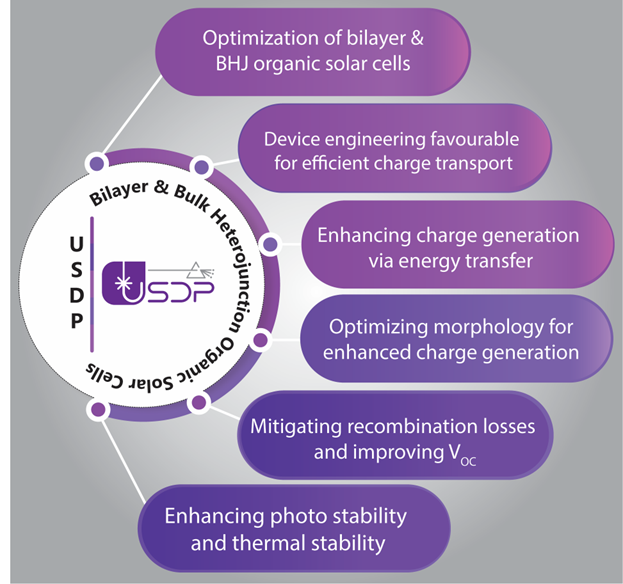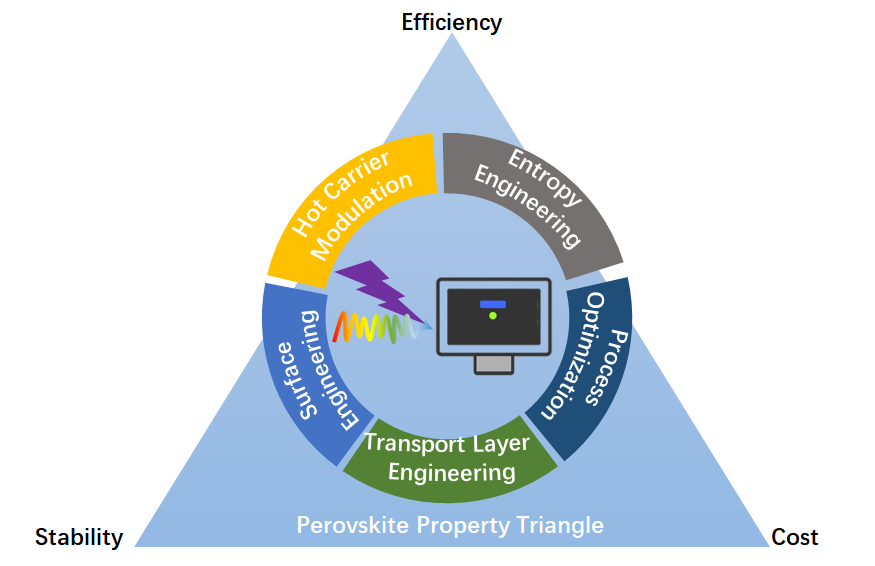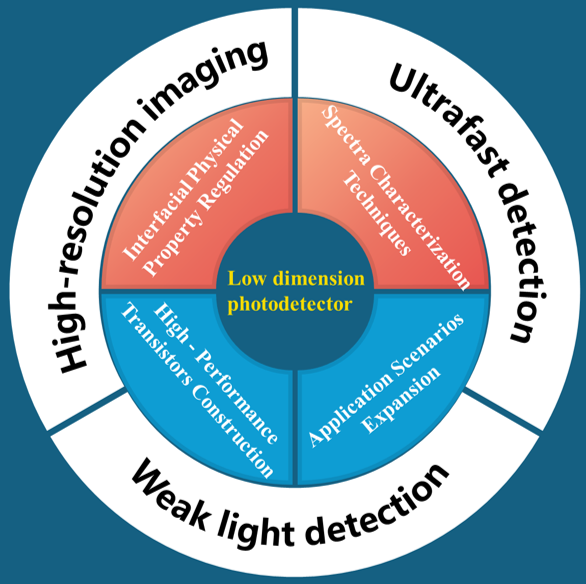Research Areas
Organic Solar Cells
The urgent need to transition to sustainable energy solutions has made solar technology a key player in meeting global energy demands with minimal environmental impact. Among the various options, organic solar cells (OSCs) stand out due to their unique advantages—bandgap tunability, semitransparency, flexibility, ease of fabrication, and rapid energy payback time. Recent advancements have propelled OSC power conversion efficiencies (PCEs) beyond 20%, reigniting interest in their potential for large-scale deployment.
At our lab, we focus on interfacial and morphology engineering to enhance OSC performance and push the technology toward commercialization. A typical bulk heterojunction (BHJ) OSC consists of an active layer between two electrodes (one transparent for light absorption). A critical challenge lies in optimizing charge carrier extraction from the active layer to the electrodes—an area where interfacial engineering plays a decisive role. One promising approach involves self-assembled monolayers (SAMs), which can serve as efficient charge transport layers. When used as interlayers, SAMs reduce energy barriers for charge transport, while their integration into the active layer can improve morphology and carrier extraction. Our research employs advanced optoelectronic characterization techniques to study SAM-modified OSCs, aiming to achieve devices with both high efficiency and long-term stability. By refining these interfaces, we move closer to making OSCs a viable, high-performance green energy solution for the future.

Perovskite Solar Cells
At our lab, we’re working to better understand how perovskite solar cells function at the microscopic level, with the goal of making them more efficient. We use a special technique called transient absorption spectroscopy, which lets us watch how tiny particles of energy (like electrons and vibrations in the material) behave right after the solar cell absorbs light.
Our focus is on electron-phonon coupling—basically, how electrons interact with vibrations in the material, which can affect how much energy the solar cell can produce. We’re especially interested in how this interaction changes when we tweak the chemical makeup of the material—specifically by changing the A-site cations (a component of the perovskite structure). We build our solar cells in the lab using a method called spin-coating, and then fine-tune their composition by mixing different chemical ingredients. By adjusting these ingredients, we can control the “entropy” or the level of disorder in the material, which in turn affects how well the solar cell performs.
Through detailed analysis of the data from our spectroscopy experiments, we can see how the energy carriers move and interact inside the cell. This helps us understand which material combinations lead to higher voltages and better efficiency, especially in concentrated sunlight conditions.

2D Materials
Advanced Photodetectors With 2D Materials
By harnessing the extraordinary physical properties inherent to 2D materials, the project is centered on the development of photodetectors with unprecedented functionality. The fabricated heterojunction photodetectors are comprehensively characterized to evaluate their performance metrics. Meanwhile, transient spectroscopy serves as a powerful tool to probe the complex interfacial charge behaviors within 2D materials. This study not only aims to expand the fundamental understanding of 2D – material – based optoelectronics but also endeavors to unlock new possibilities for high – performance optoelectronic devices, with far – reaching implications for future technologies.

